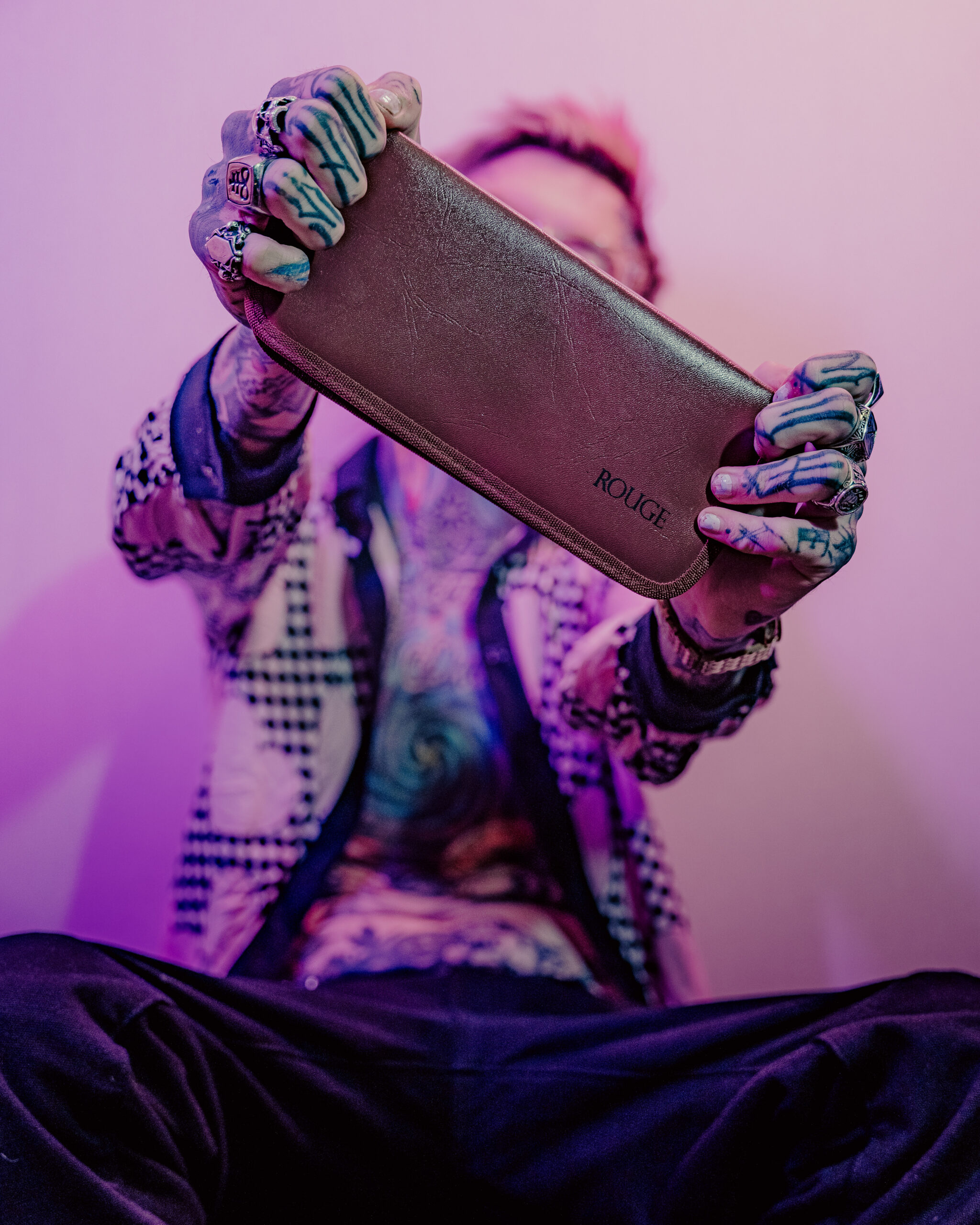Understanding Demigender Identity
Demigender identity exists at the intersection of gender fluidity and the desire for partial connection to a specific gender. It’s a nuanced experience where individuals may feel partially aligned with one gender while also feeling disconnected from its traditional expectations and limitations. This exploration delves into the complexities of demigender identities, examining how they challenge conventional understandings of gender and pave the way for a more inclusive and diverse spectrum of gender expression.
Definition and Spectrum
Demigender identity exists at the intersection of gender fluidity and the desire for partial connection to a specific gender. It’s a nuanced experience where individuals may feel partially aligned with one gender while also feeling disconnected from its traditional expectations and limitations. Demigenders may identify as partially male, female, or any other gender, experiencing this sense of partial alignment in varying degrees.
- Demigirl: Partially identifies as a girl but doesn’t fully align with all aspects of femininity.
- Demiboy: Partially identifies as a boy but doesn’t fully align with all aspects of masculinity.
- Other demigender identities: Individuals may identify as partially aligned with any gender, regardless of societal norms or expectations.
Understanding these nuances is crucial for fostering a culture of acceptance and inclusivity. Demigender individuals deserve to be seen, heard, and respected for their unique experiences and expressions of gender.
Experiences of Demigenders Individuals
Demigender identity exists at the intersection of gender fluidity and the desire for partial connection to a specific gender. It’s a nuanced experience where individuals may feel partially aligned with one gender while also feeling disconnected from its traditional expectations and limitations. Demigenders may identify as partially male, female, or any other gender, experiencing this sense of partial alignment in varying degrees.
Understanding these nuances is crucial for fostering a culture of acceptance and inclusivity. Demigender individuals deserve to be seen, heard, and respected for their unique experiences and expressions of gender.

- Demigirl: Partially identifies as a girl but doesn’t fully align with all aspects of femininity.
- Demiboy: Partially identifies as a boy but doesn’t fully align with all aspects of masculinity.
- Other demigender identities: Individuals may identify as partially aligned with any gender, regardless of societal norms or expectations.
Challenging Traditional Gender Norms

Demigender identity challenges traditional understandings of gender by existing at the intersection of fluidity and a partial connection to a specific gender. This nuanced experience defies rigid binary categories and embraces the complexity of individual gender expression. Individuals who identify as demigender may feel partially aligned with one gender while rejecting the limitations and expectations associated with it, paving the way for a more inclusive and diverse spectrum of gender identities.
Language and Pronouns
Demigender identity challenges traditional understandings of gender by existing at the intersection of fluidity and a partial connection to a specific gender. This nuanced experience defies rigid binary categories and embraces the complexity of individual gender expression.
Individuals who identify as demigender may feel partially aligned with one gender while rejecting the limitations and expectations associated with it, paving the way for a more inclusive and diverse spectrum of gender identities.
Expression and Self-Identification
Demigender identity exists at the intersection of gender fluidity and the desire for partial connection to a specific gender. It’s a nuanced experience where individuals may feel partially aligned with one gender while also feeling disconnected from its traditional expectations and limitations. Demigenders may identify as partially male, female, or any other gender, experiencing this sense of partial alignment in varying degrees.
- Demigirl: Partially identifies as a girl but doesn’t fully align with all aspects of femininity.
- Demiboy: Partially identifies as a boy but doesn’t fully align with all aspects of masculinity.
- Other demigender identities: Individuals may identify as partially aligned with any gender, regardless of societal norms or expectations.
Understanding these nuances is crucial for fostering a culture of acceptance and inclusivity. Demigender individuals deserve to be seen, heard, and respected for their unique experiences and expressions of gender.
Demigender identity challenges traditional understandings of gender by existing at the intersection of fluidity and a partial connection to a specific gender. This nuanced experience defies rigid binary categories and embraces the complexity of individual gender expression. Individuals who identify as demigender may feel partially aligned with one gender while rejecting the limitations and expectations associated with it, paving the way for a more inclusive and diverse spectrum of gender identities.
Demigender identity challenges traditional understandings of gender by existing at the intersection of fluidity and a partial connection to a specific gender. This nuanced experience defies rigid binary categories and embraces the complexity of individual gender expression.
Individuals who identify as demigender may feel partially aligned with one gender while rejecting the limitations and expectations associated with it, paving the way for a more inclusive and diverse spectrum of gender identities.
Social Perceptions and Expectations
Demigender identity exists at the intersection of gender fluidity and the desire for partial connection to a specific gender. It’s a nuanced experience where individuals may feel partially aligned with one gender while also feeling disconnected from its traditional expectations and limitations. Demigenders may identify as partially male, female, or any other gender, experiencing this sense of partial alignment in varying degrees.
Understanding these nuances is crucial for fostering a culture of acceptance and inclusivity. Demigender individuals deserve to be seen, heard, and respected for their unique experiences and expressions of gender.
Demigender identity challenges traditional understandings of gender by existing at the intersection of fluidity and a partial connection to a specific gender. This nuanced experience defies rigid binary categories and embraces the complexity of individual gender expression. Individuals who identify as demigender may feel partially aligned with one gender while rejecting the limitations and expectations associated with it, paving the way for a more inclusive and diverse spectrum of gender identities.
- Demigirl: Partially identifies as a girl but doesn’t fully align with all aspects of femininity.
- Demiboy: Partially identifies as a boy but doesn’t fully align with all aspects of masculinity.
- Other demigender identities: Individuals may identify as partially aligned with any gender, regardless of societal norms or expectations.
Implications for Society
Demigender identity challenges traditional notions of gender by existing at the intersection of fluidity and partial alignment with a specific gender. This nuanced experience expands our understanding of gender beyond rigid binaries, embracing the complexity of individual expression. By rejecting restrictive societal expectations, demigender individuals contribute to a more inclusive and diverse spectrum of gender identities.
Inclusivity and Representation
The recognition and acceptance of demigender identities have significant implications for society’s understanding of gender. By acknowledging the validity of experiences that fall outside the traditional binary framework, we challenge restrictive norms and create space for a wider spectrum of gender expression.
Inclusivity becomes paramount as society strives to create environments where individuals feel safe and affirmed in their identities. This means fostering education and awareness about demigender experiences, using inclusive language, and ensuring representation in media, literature, and other forms of cultural expression.
Increased visibility and representation of demigender individuals are crucial for challenging stereotypes and promoting understanding. By sharing their stories and perspectives, demigender people contribute to a more nuanced and compassionate society that embraces diversity in all its forms.
Evolving Gender Concepts
The rise of demigender identities challenges traditional societal notions of gender by highlighting the fluidity and spectrum of individual experiences. This shift pushes beyond rigid binary categories, prompting a broader understanding of gender as a complex and multifaceted aspect of human identity.
Demigender recognition has significant implications for social structures and norms. It necessitates a reassessment of traditional gender roles and expectations, paving the way for greater inclusivity and acceptance of diverse gender expressions.
Moreover, embracing demigender identities fosters a more equitable society where individuals feel empowered to express themselves authentically without fear of judgment or discrimination.
Moving Towards Acceptance and Understanding
The recognition of demigender identities has profound implications for society’s understanding of gender. It challenges the traditional binary framework, pushing for a more inclusive and expansive view of gender expression. By acknowledging the validity of experiences that fall outside the rigid categories of male and female, society moves towards a more nuanced and accepting approach to gender diversity.
This shift has far-reaching consequences, impacting everything from language and social interactions to legal frameworks and cultural norms. It necessitates a reevaluation of traditional gender roles and expectations, creating space for individuals to define their own identities and express themselves authentically.
Fostering understanding and acceptance of demigender identities is crucial for building a more inclusive society. This involves education, open dialogue, and a commitment to using inclusive language that respects the diversity of gender experiences. By embracing the complexity of gender, we create a world where everyone feels seen, heard, and valued for who they are.
nipple suction
C4YL
Grace Suh Therapy
- Gender Euphoria And Why It’s More Than Just A Fleeting Feeling - July 14, 2025
- Downturned Smile Treatment Near Normandy, Surrey - July 2, 2025
- Does Lip Filler Make You Lick Your Lips? - June 28, 2025
